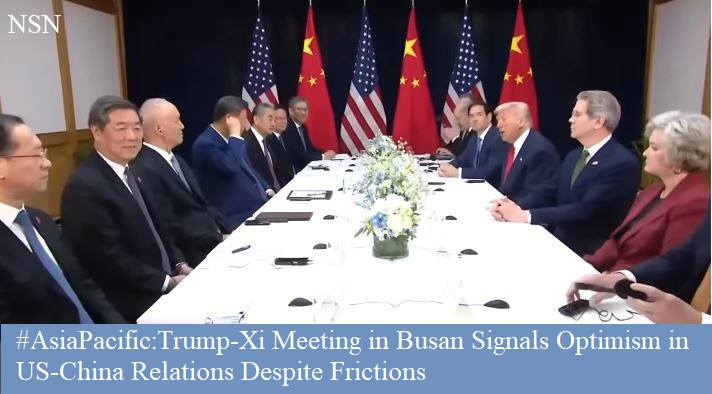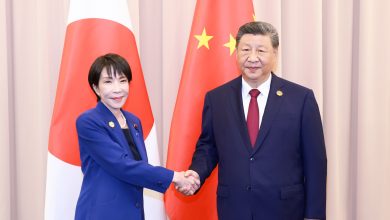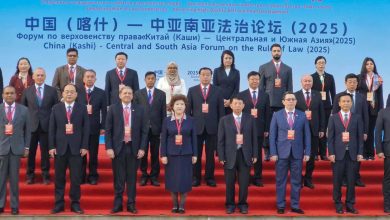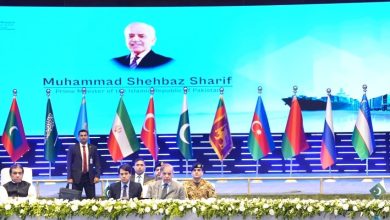CooperationAsia-PacificDiplomacyNewsNSNPhotos
Trump-Xi Meeting in Busan Signals Optimism in US-China Relations Despite Frictions
Donald Trump and Chinese President Xi Jinping conclude a high-stakes bilateral meeting on the sidelines of the 2025 APEC Summit in Busan, South Korea
-
Trump-Xi Meeting in Busan Signals Optimism in US-China Relations Despite Frictions
-
U.S. President Donald Trump and Chinese President Xi Jinping conclude a high-stakes bilateral meeting on the sidelines of the 2025 APEC Summit in Busan, South Korea
-
Trump-Xi use friendly tone, positive gestures amid strategic tensions
By Muhammad Arif, Editor NSN.Asia
Beijing: In a pivotal moment for global diplomacy, U.S. President Donald Trump and Chinese President Xi Jinping held a high-stakes bilateral meeting on the sidelines of the 2025 APEC Summit in Busan, South Korea. This marked their first face-to-face encounter since Trump’s return to the White House earlier this year, and the first such meeting between the two leaders in six years. While no formal framework or agreement emerged, the tone of the meeting was notably conciliatory, with both leaders projecting warmth and partnership—an encouraging signal for a relationship long strained by trade disputes, strategic rivalry, and geopolitical flashpoints.
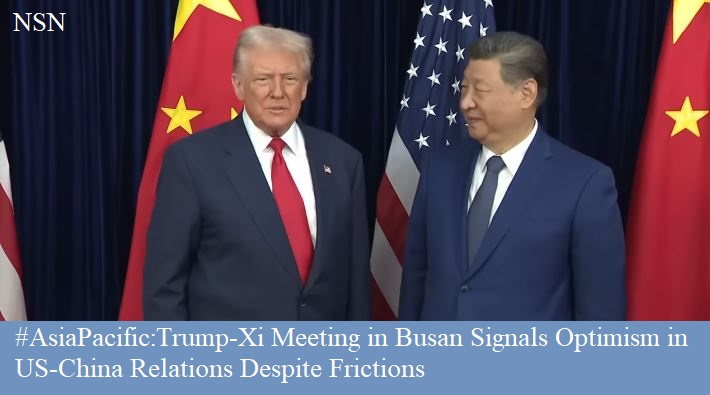
-
A Friendly Tone Amid Strategic Tensions
The meeting began with a handshake and smiles, as Trump told reporters, “We know each other very well, we have a great relationship. Good to see him again. We could sign a trade deal today.” Xi responded in kind, emphasizing mutual respect and the importance of dialogue. Observers noted the relaxed body language and cordial exchanges, a stark contrast to the combative rhetoric that has often defined U.S.-China interactions in recent years.
Despite the friendly optics, the backdrop was complex. The APEC Summit itself unfolded amid deep divisions over tariffs, technology restrictions, and competing economic visions. Trump’s renewed push for protectionist measures and Xi’s emphasis on state-led growth have unsettled global markets and tested APEC’s founding principles.
-
Delegations and Diplomatic Weight
Both leaders were accompanied by high-level delegations, underscoring the gravity of the meeting. Trump’s team included senior trade negotiators, national security advisors, and economic strategists. Xi’s entourage featured top officials from China’s Ministry of Commerce, foreign affairs, and central banking. The composition of these delegations signaled that trade and economic cooperation were central to the agenda.
According to analysts, the discussions were dominated by trade-related issues, including tariffs, technology transfers, and supply chain resilience. While no formal deal was announced, sources close to the talks described the atmosphere as “calm, constructive, and embedded with optimism”.
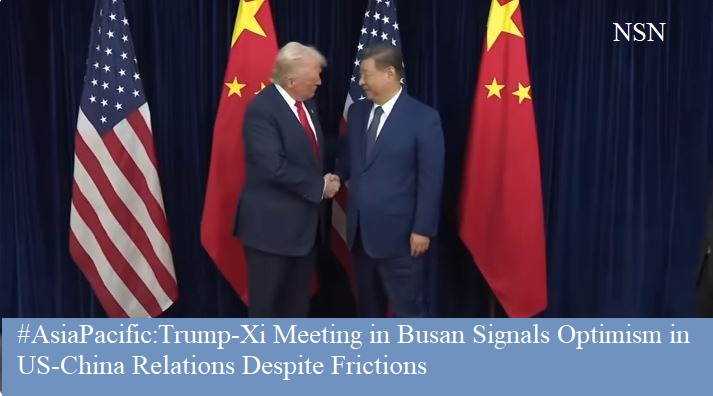
-
No Framework, But a Reset?
Trump, often dubbed the “deal maker,” did not unveil a new framework or agreement following the meeting. This absence of deliverables may disappoint some observers, especially given the buildup to the summit. However, experts argue that the meeting’s symbolic value may outweigh its immediate outcomes.
“This was a high-risk, high-reward leaders’ meeting,” said Han Shen Lin, China director at The Asia Group. “Both sides were trying to hit the reset button. The fact that they met in person, exchanged views, and avoided escalation is itself a positive development”.
Indeed, the meeting may have laid the groundwork for future negotiations. Trump hinted at ongoing talks, while Xi emphasized the need for “strategic patience and mutual understanding.” The leaders reportedly agreed to establish working groups to explore cooperation in areas such as climate resilience, digital infrastructure, and regional security.
-
Strategic Hotspots and Global Implications
Beyond trade, the leaders touched on several strategic hotspots, including Taiwan, the South China Sea, and North Korea. The timing was particularly sensitive, as Trump arrived in South Korea just hours after North Korea test-fired a nuclear-capable cruise missile. While the leaders did not issue a joint statement, sources suggest that both sides reaffirmed their commitment to regional stability and non-proliferation.
The implications of the Trump-Xi meeting extend far beyond bilateral ties. As the world’s two largest economies, the U.S. and China wield enormous influence over global trade, technology, and security. Their ability—or inability—to cooperate affects everything from climate policy to AI governance.
-
South Korea’s Diplomatic Balancing Act
Host nation South Korea played a crucial role in facilitating the meeting. President Lee Jae Myung welcomed both leaders and emphasized the importance of dialogue in resolving regional tensions. South Korea, which maintains strong ties with both Washington and Beijing, finds itself walking a diplomatic tightrope amid growing U.S.-China rivalry.
Busan, a bustling port city known for its strategic location and economic dynamism, provided a fitting backdrop for the summit. The choice of venue underscored the importance of maritime trade and regional connectivity—issues central to both APEC and the broader Indo-Pacific strategy.
